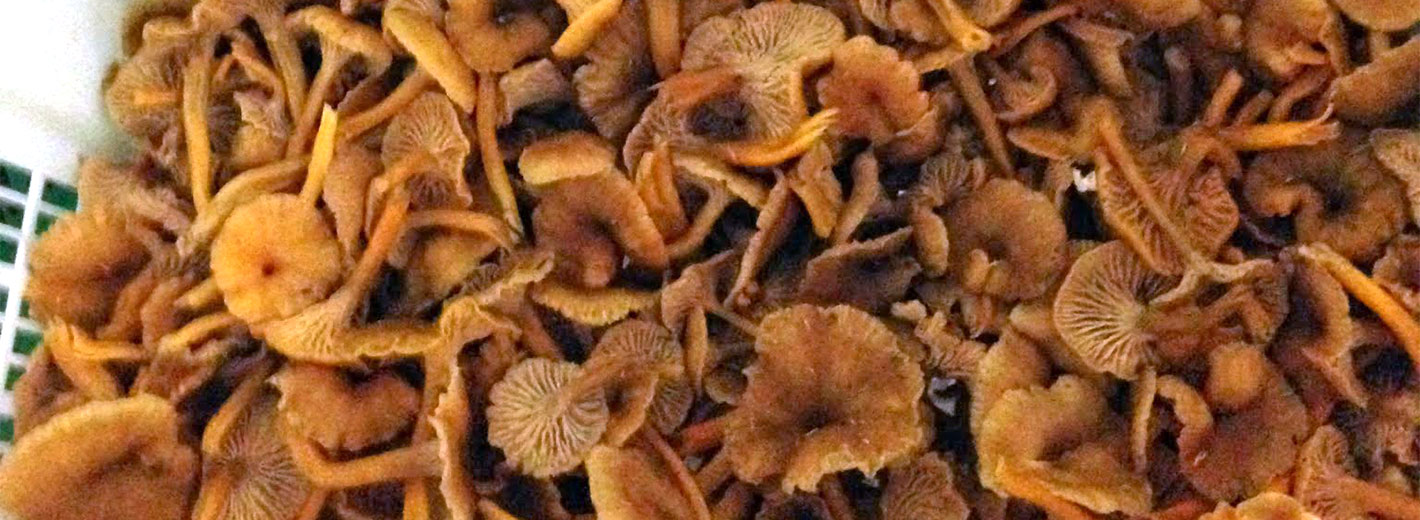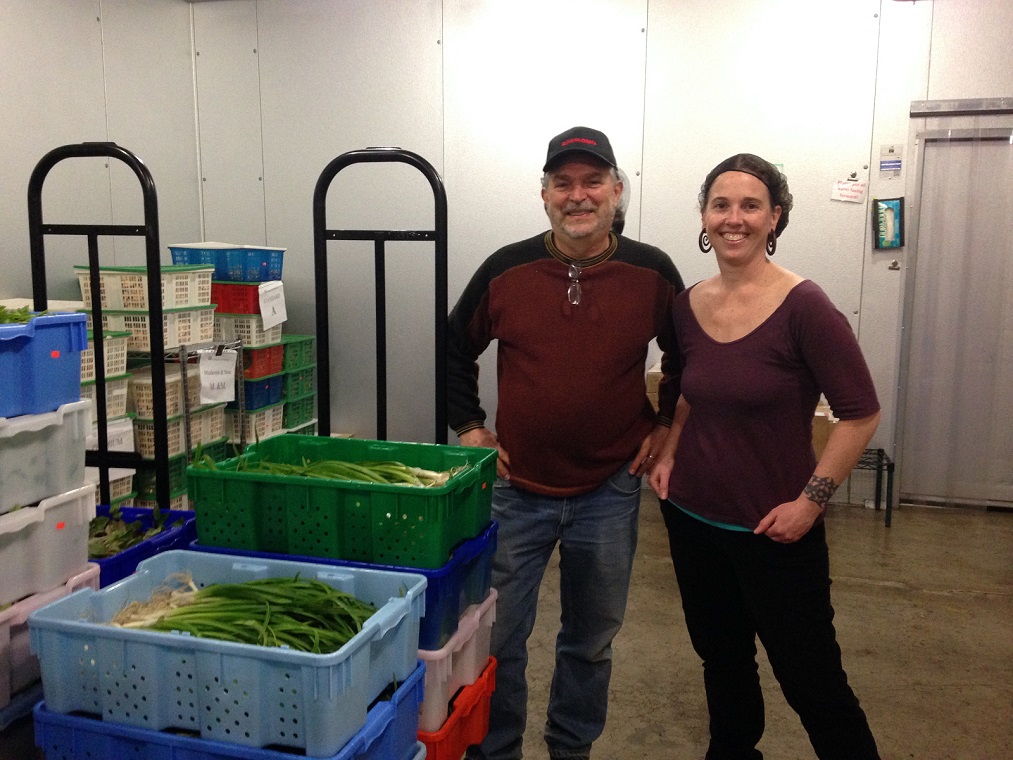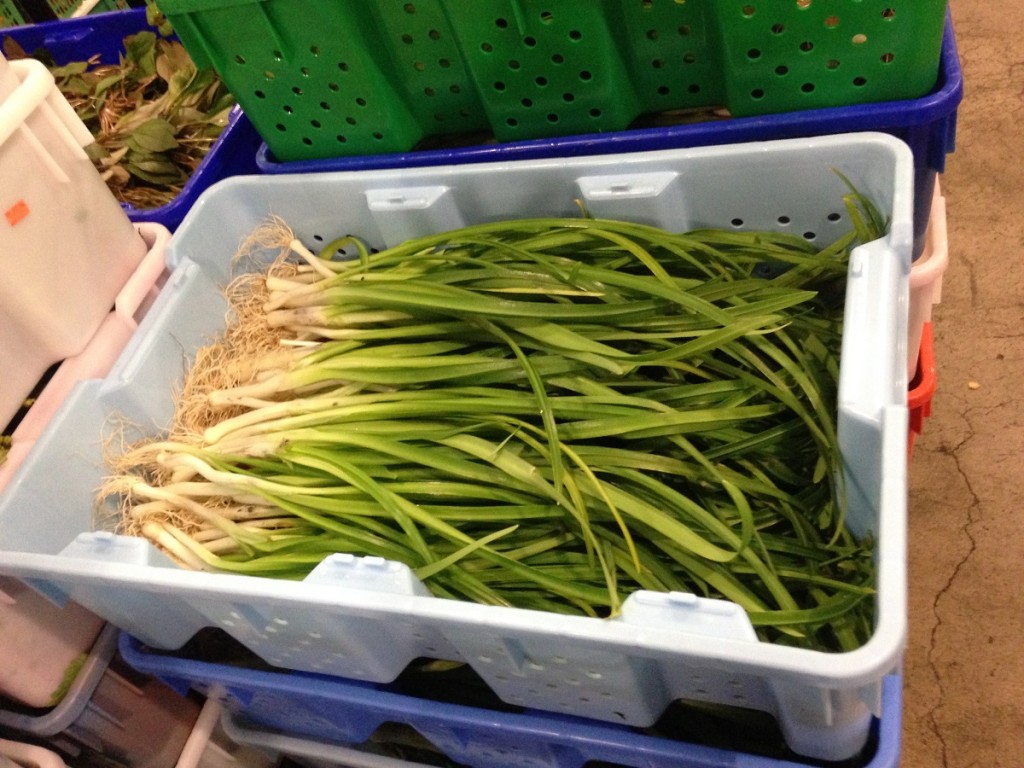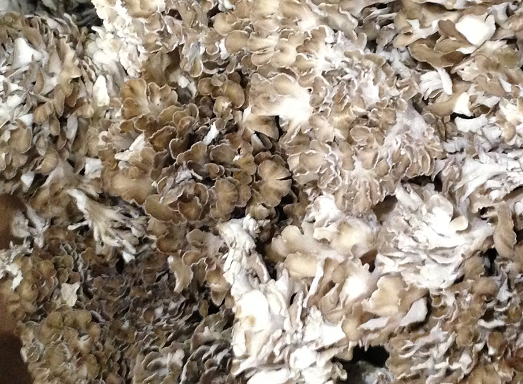
Learning About Wild Mushroom Foraging from MycoLogical Natural Products
I’m new to Bon Appétit, so maybe this is old news to some, but I was thrown for a loop to discover that several Bon Appétit chefs regularly use wild mushrooms in their cooking. The Bon Appétit teams at Willamette University and Mt. Angel Abbey in Oregon not only cook with wild mushrooms, but the chefs and managers are also big mushroom foragers themselves!
Naturally, after finding out about this, I had to pay a visit to MycoLogical Natural Products, which provides most of the wild mushrooms those cafés use.

Founder and President Owen Rice poses with Manager Juli Lohoefener
MycoLogical Founder and President Owen Rice started a wild mushroom distribution company 20 years ago in Eugene, OR. He had foraged mushrooms for fun, and as a returning student at the University of Oregon, he became passionate about the link between forest conservation and harvesting wild products. He believed that one day, forests could be managed and maintained for foraging rather than exploited for timber. He started out by renting space in a restaurant kitchen to package dried mushrooms, which he sold out of his studio apartment.
Today, MycoLogical is still located in the same college town, and they still sell wild mushrooms. Aside from that, the company has changed quite a bit. Now there are 15 to 18 employees (depending on the season), with a building for the main office and distribution center, and a separate space for selling dried mushrooms.

Wild onions are just one of the many wild greens I saw in the walk-in cooler
They have also expanded well beyond wild mushrooms. Their storage coolers now house wild mushrooms from the mountains, farmed mushrooms and baby garlic, and wild greens like wild onions, stinging nettles, and fiddlehead ferns. The wild greens are often found on old homesteads and are believed to be non-native plants that early settlers brought out west. MycoLogical also has perhaps the widest selection in the country of organic dried chili peppers, and during the summer months they sell organically grown and wild berries.
MycoLogical’s biggest clients are high-end chefs and gourmet wholesale distributors, which can translate into some pretty selective buyers. Many chefs use the products for garnish, so they want them to look perfect. Fiddlehead ferns must be coiled just right, and the stems have to be just the right length, which means the foragers must really know what to look for.
When I asked who their foragers are, I found out that there is no “typical” forager. Many are young Latino immigrants, some are Oregon families that have been foraging for years, and Owen told me about one grandmother who works for a prominent tech company and takes her grandchildren out to forage. One time she and her grandkids collected $2,000 worth of morel mushrooms every day for an entire week!

Maitake mushrooms are prized by many for their purported medicinal qualities
At this point you might be thinking what I was: Isn’t it hard not to accidentally pick poisonous ones?
Owen explained to me that their mushrooms are triple checked. But they still don’t really encounter poisonous mushrooms — most, if not all, poisonous mushrooms are in the gilled family (think of the gills on the bottom of a portobello), and almost all of their wild mushrooms come from mushroom families that don’t have gills.
We also talked about how climate change has been affecting Owen’s mushroom selection. Now the winter season ends an entire month earlier. Foraging reflects how the natural environment is changing — with different climates, different species grow and the same ones develop in different ways. That means chefs can never be sure that there will be a supply of exactly what they are looking for, encouraging them to be creative with what comes in. And creativity seems to be a big part of what the foraging world is about — never knowing exactly what will be found!